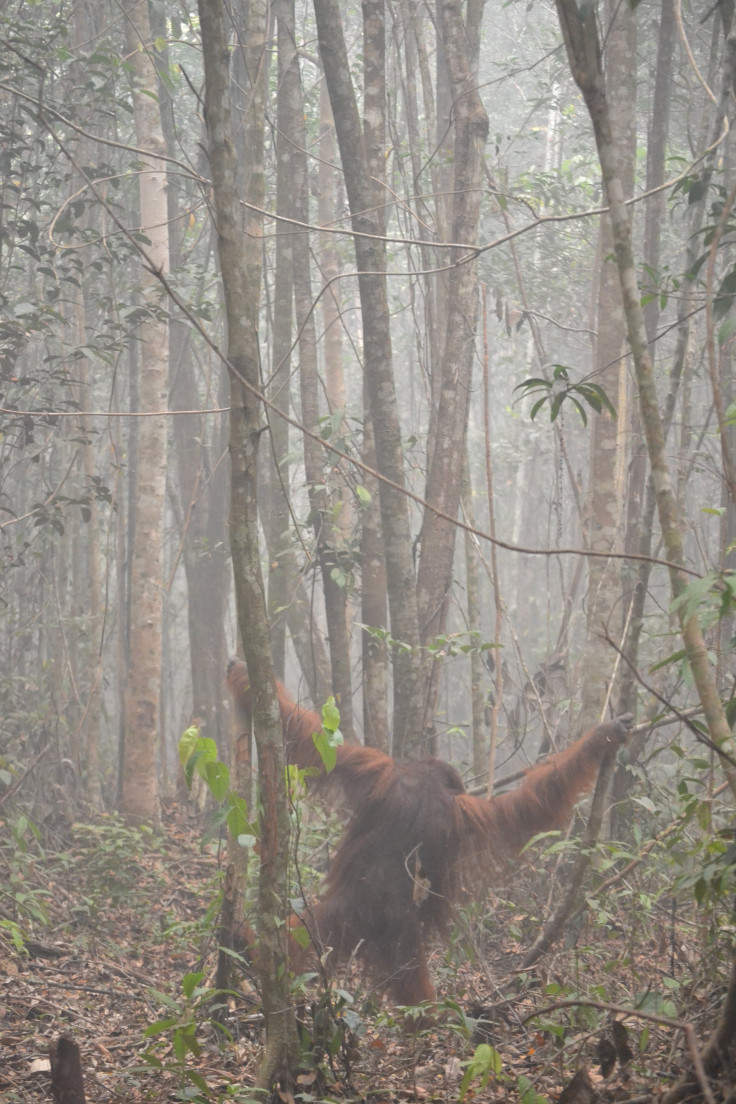Endangered Bornean Orangutans Threatened Further By Wildfires, Both Natural And Human-Made

Orangutans are among the closest relatives of Homo sapiens, and their three known species are part of the seven great apes — chimpanzees, bonobos and the eastern and western gorillas being the other four — that have survived the onslaught of time and human activity. The latter, particularly land clearing for agriculture and felling trees for logging, are considered as the main factors that have brought orangutans close to the edge of extinction, but a new threat has been brought to light — wildfires.
All three species of orangutans — Bornean, Sumatran and the recently discovered Tapanuli — are found in a small part of Southeast Asia, mostly in Indonesia, and are already listed as critically endangered in the International Union for Conservation of Nature’s Red List of Threatened Species. Indonesia is also infamous for its annual forest fires, which sometimes blanket the entire region in smoke and haze for months.
Wendy Erb, a researcher from Rutgers University in New Brunswick, New Jersey, was studying male orangutans in Indonesian Borneo when the fires started (often done by small farmers to clear forest land) in 2015. A few weeks later, Erb noticed a change in the male orangutans’ vocalizations, specifically in the call scientists think males use to attract females and to warn other males.
“I thought they sounded raggedy, a little like humans who smoke a lot,” Erb said in a statement Tuesday, and that prompted her to investigate the effects of inhaling smoke on the orangutans’ health.

To do that, she chose four “flanged” males — these males have large, flap-like pads on their cheeks, called flanges, and females prefer males who have them — who weighed about 200 pounds each. Analysis of their behavior and their urine (which was collected every day before dawn) showed researchers that the males were consuming more calories while traveling lees and resting more than usual. At the same time, their bodies were also burning more fat by higher production of ketone molecules.
All other things remaining the same, the only explanation for this strange phenomenon was the three months of fire and smoke the orangutans had been exposed to. The researchers also pointed out the fact that about 100,000 Bornean orangutans disappeared from the undisturbed forests of Kalimantan, Indonesia, between 1999 and 2015, something they said was further indication that it wasn’t just loss of habitat that was causing the decline of the species.
To expand their study, the researchers plan to look at data from female and juvenile orangutans to understand how fires and smoke affect their health.
“We’ll look at different indicators of inflammation in the urine. We’ll look for cytokines, proteins that are part of the immune response, and cortisol, a hormone associated with stress. It’s possible these males are burning fat because their energy is going to repairing tissue,” Rutgers’ Erin Vogel, co-author of the study and co-director of the Tuanan Orangutan Research Station (where the study took place), said in the statement.
The study was published online Tuesday in the journal Scientific Reports.
© Copyright IBTimes 2024. All rights reserved.











